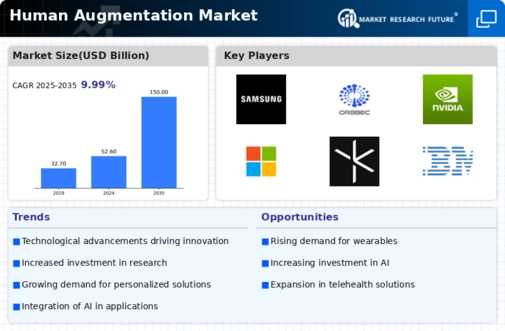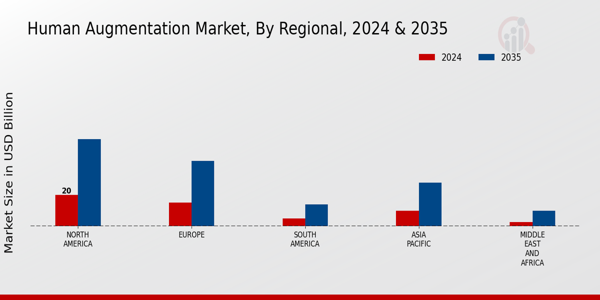Market Analysis
In-depth Analysis of Human Augmentation Market Industry Landscape
Introduction to Human Augmentation Market Growth In the upcoming years, the global market for human augmentation is set to witness significant expansion. This growth is propelled by various factors that play a crucial role in shaping the industry landscape. Notable drivers include continuous advancements in modifying the human body, the widespread adoption of exoskeletons in military applications, and a growing market for wearable augmentation products.
However, alongside these positive developments, the industry faces certain challenges, including social and ethical issues associated with non-medical augmentation practices, as well as the considerable costs involved in medical implants and a shortage of skilled professionals. Advancements in Human Body Modification One of the primary factors fueling the growth of the global human augmentation market is the continuous progress in the field of human body modification. This involves the development and implementation of technologies and techniques aimed at enhancing various aspects of human capabilities.
From improving sensory perceptions to augmenting physical strength, these advancements contribute to a wide range of applications. As technology continues to evolve, so does the potential for further breakthroughs in human augmentation, driving the market forward. Increasing Use of Exoskeletons in Military Applications The utilization of exoskeletons in military applications represents another significant driver for the growth of the human augmentation market. Exoskeletons are wearable robotic devices designed to enhance the physical capabilities of individuals. In military settings, these devices play a crucial role in augmenting soldiers' strength, endurance, and overall performance. As the demand for advanced military technologies continues to rise, the adoption of exoskeletons is expected to increase, driving market growth in the human augmentation sector. Rising Demand for Wearable Augmentation Products The market is also witnessing a surge in demand for wearable augmentation products.
These products encompass a variety of devices that individuals can wear to enhance their cognitive or physical abilities. From smart glasses that provide augmented reality experiences to fitness trackers that monitor and optimize physical performance, wearable augmentation products have gained popularity in various sectors. The increasing awareness and acceptance of such devices contribute to the overall growth of the human augmentation market. Challenges in the Human Augmentation Landscape While the human augmentation market is poised for growth, it is not without its challenges. One prominent concern revolves around the social and ethical implications of non-medical augmentation. As technologies advance, the prospect of enhancing human capabilities for non-medical purposes raises ethical questions and societal debates. Striking a balance between technological progress and ethical considerations becomes crucial in navigating this aspect of the human augmentation landscape.
High Costs of Medical Implants Another obstacle hindering the seamless growth of the human augmentation market is the high cost associated with medical implants. Medical augmentation often involves the integration of advanced implants to enhance or replace biological functions. However, the expenses related to research, development, and production of these implants can be substantial. As a result, the accessibility of such medical augmentation procedures becomes limited, posing a challenge to the widespread adoption of these technologies. Shortage of Skilled Professionals In addition to cost-related challenges, the human augmentation market faces a shortage of skilled professionals.
The development and implementation of augmentation technologies require a workforce with specialized knowledge and expertise. The shortage of professionals proficient in this field hinders the pace at which innovations can be brought to market. Addressing this shortage becomes imperative to ensure the sustained growth and advancement of the human augmentation industry.
















Leave a Comment